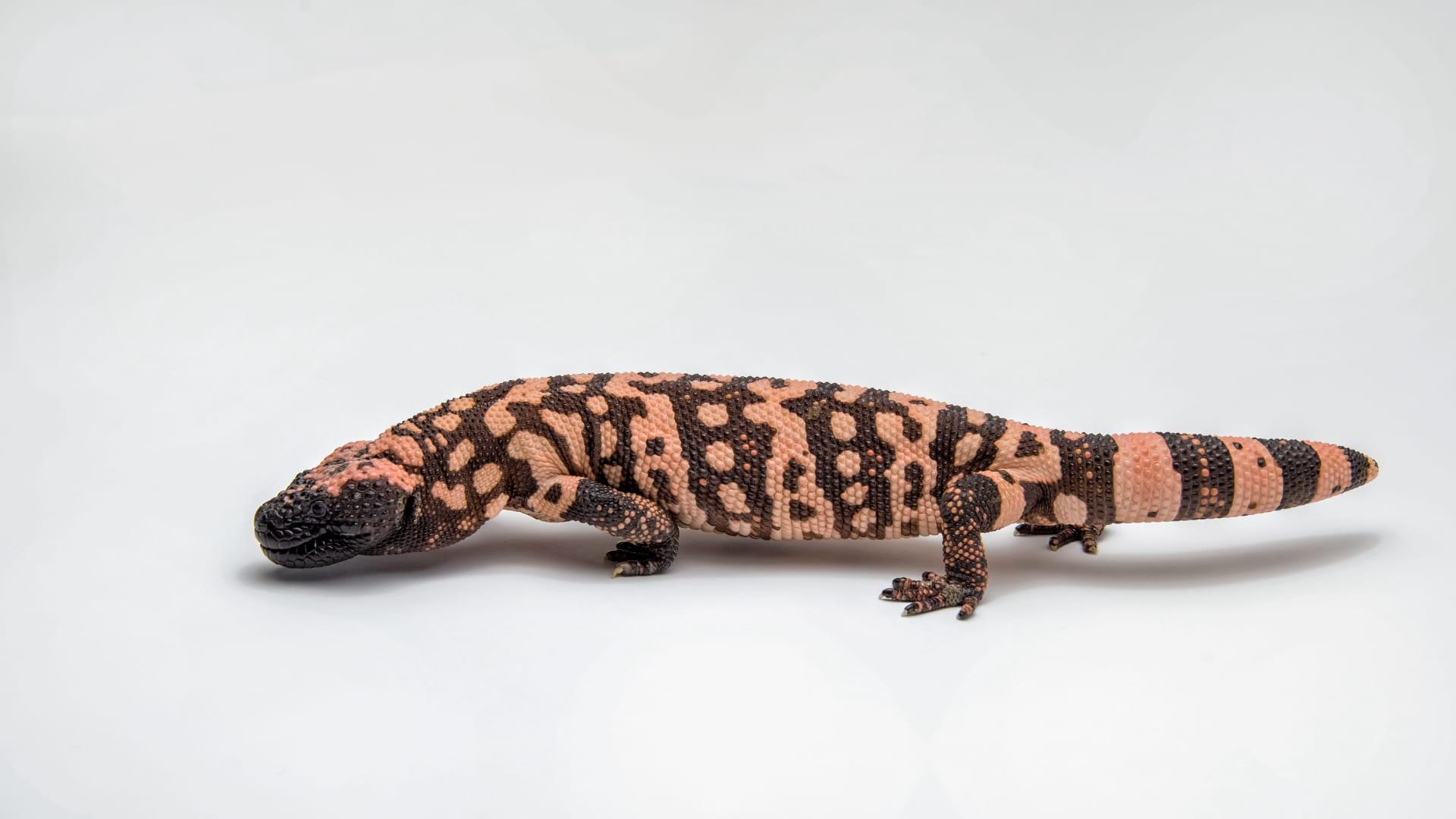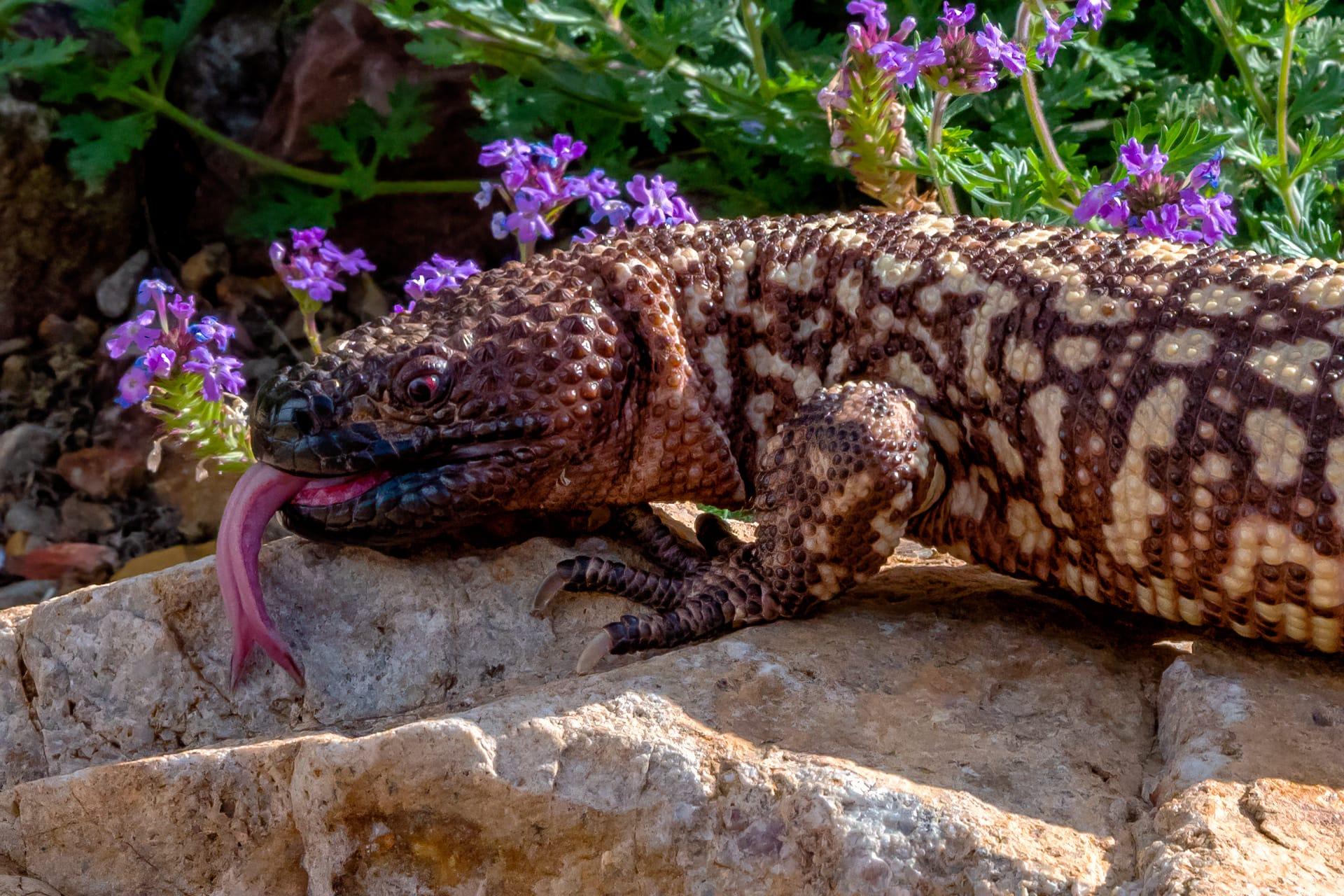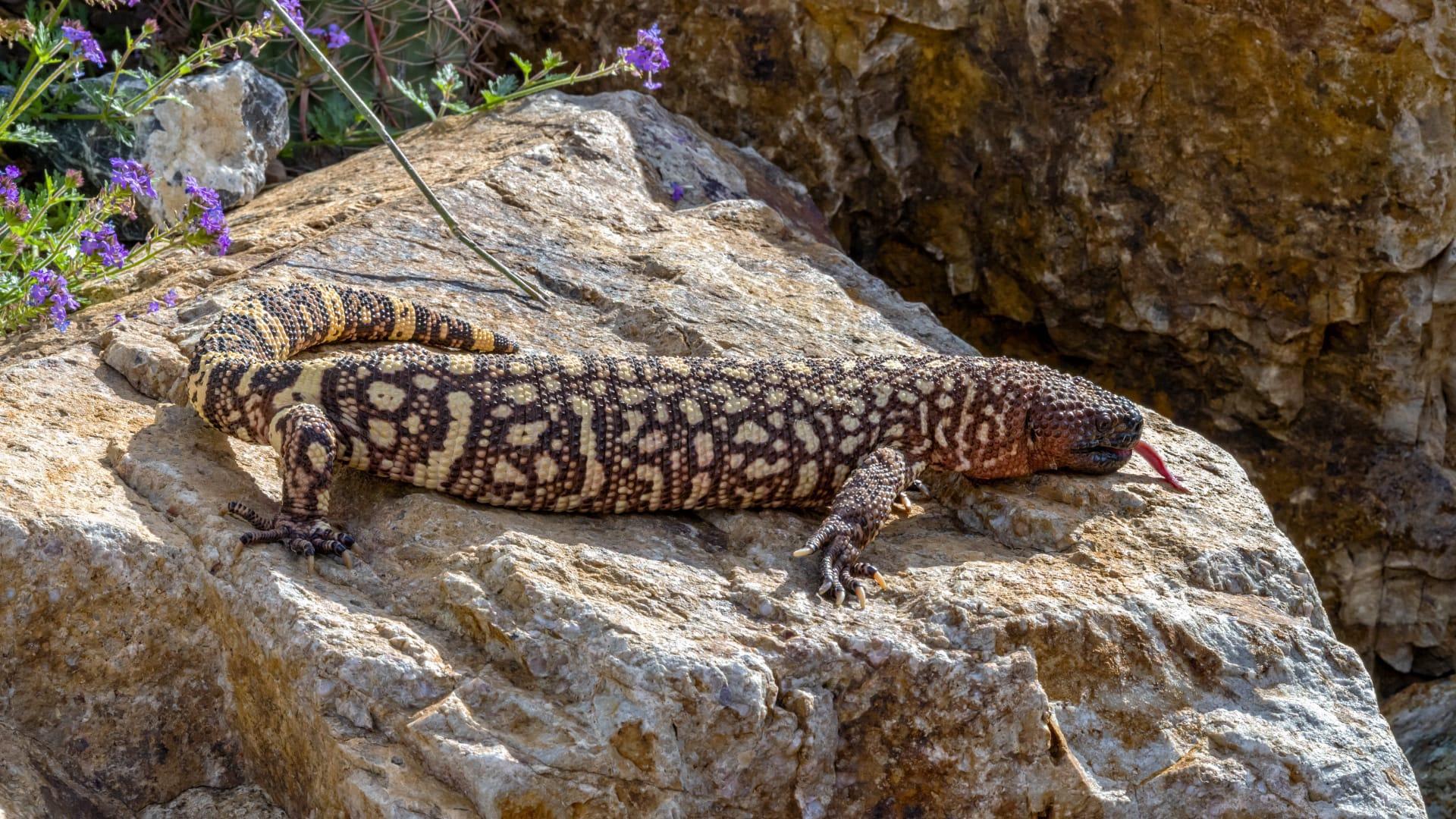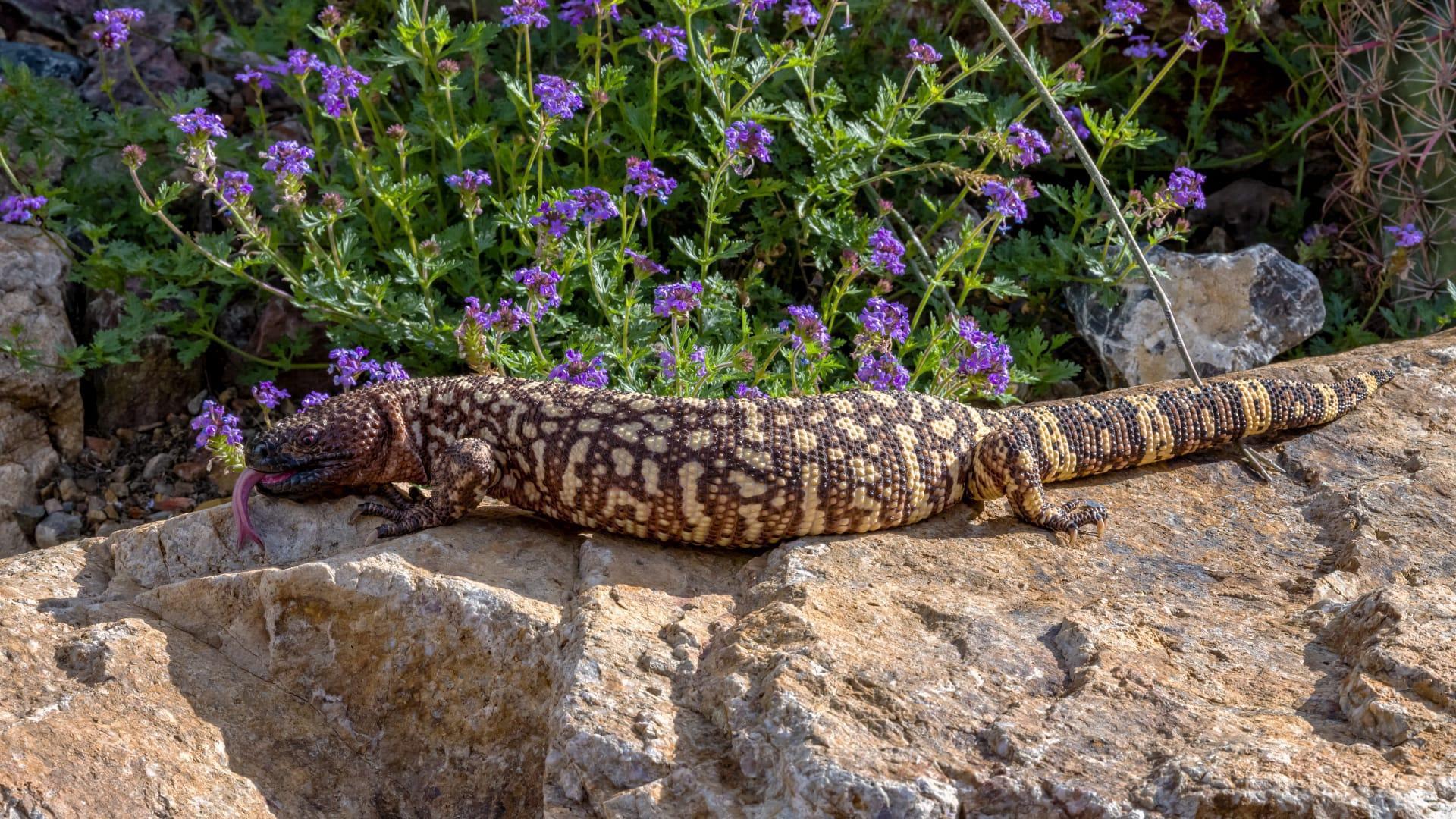Mexican Beaded Lizard
- Home /
- Mini Encyclopedia /
- Animal /
- Mexican Beaded Lizard
1
The Mexican Beaded Lizard, scientifically known as Heloderma horridum, belongs to the family Helodermatidae. This species is one of only two venomous lizards in the world, alongside its cousin, the Gila monster. The Mexican Beaded Lizard is characterized by its distinctive bead-like scales covering its robust body. This unique adaptation is not only for defense but also aids in its survival in diverse environments. The lizard's scientific classification places it squarely in the reptile category, under the order Squamata, which includes snakes and other lizards. Its genus, Heloderma, is noted for its rare venomous trait, setting it apart from most other lizards.
The Mexican Beaded Lizard is native to Mexico, as its name suggests, but its range extends into southern Guatemala. It thrives in a variety of habitats, from arid, rocky regions to tropical deciduous forests. The lizard prefers lower altitudes, typically found below 1,500 meters. In Mexico, its distribution spans across the Pacific coastal states from Sonora to Oaxaca. Its presence in different ecosystems highlights its adaptability and resilience, allowing it to survive in varying climatic conditions. Despite this adaptability, its population faces threats due to habitat loss and illegal pet trade, making conservation efforts crucial.

2
Question: Do Mexican Beaded Lizards chase and attack humans?
Answer: Contrary to popular belief, the Mexican Beaded Lizard is not aggressive towards humans. These lizards are often misunderstood due to their venomous nature. They are, in fact, quite reclusive and prefer to avoid confrontation. When threatened, their first response is usually to flee. They resort to biting only as a last defense mechanism. The venom of the Mexican Beaded Lizard, while potent, is rarely fatal to humans. However, it can cause significant pain and swelling. It's important to understand that these creatures are more interested in evading humans than confronting them, and attacks are extremely rare.

3
The Mexican Beaded Lizard's survival strategy is fascinating. It's primarily nocturnal, hunting at night to avoid the heat of the day. This lizard feeds on a variety of prey, including small mammals, birds, eggs, and reptiles. Its venom plays a critical role in subduing prey, especially larger or more aggressive species. The beaded lizard has a slow metabolism, which allows it to go long periods without food – a crucial adaptation for survival in its often harsh habitat.
Another key survival strategy is its burrowing habit. The Mexican Beaded Lizard spends much of its time in burrows, which offer protection from predators and extreme temperatures. These burrows are typically found under rocks or in other sheltered locations. Its scales not only provide armor against predators but also aid in burrowing, as their rough texture helps in excavating soil. The lizard's ability to conserve water and withstand high temperatures further enhances its survival in arid and semi-arid environments.

4
In the ecosystem, the Mexican Beaded Lizard plays a vital role as both predator and prey. As a predator, it helps control the populations of the small animals it feeds on, such as rodents and birds. This regulation is crucial for maintaining a balanced ecosystem. Its diet also includes carrion, which aids in the natural process of decomposition and nutrient cycling.
As prey, the Mexican Beaded Lizard is a source of food for larger predators, such as birds of prey and wild cats. This interaction is key to the food chain dynamics within its habitat. Additionally, its burrows provide shelter for other small animals and insects, contributing to the biodiversity of its ecosystem. The presence of the Mexican Beaded Lizard indicates a healthy, functioning ecosystem, reflecting its importance in the natural world.

5
Film: A notable documentary featuring the Mexican Beaded Lizard is "Venom: Nature's Killer," produced by the National Geographic Society in 2011. This film explores the fascinating world of venomous creatures, including the Mexican Beaded Lizard. It delves into how these animals use their venom for hunting and self-defense, offering insights into their behavior and ecological role.
Book: "Lizards: Windows to the Evolution of Diversity" by Eric R. Pianka and Laurie J. Vitt, published in the United States in 2003, includes a section on the Mexican Beaded Lizard. The authors provide a comprehensive look at lizard biology and ecology, with a focus on the unique characteristics of venomous lizards like the Mexican Beaded Lizard.
Book: Another informative read is "Venomous Reptiles of the Western Hemisphere" by Jonathan A. Campbell and William W. Lamar, released in 2004 in the United States. This extensive work covers various venomous reptiles, including the Mexican Beaded Lizard. It provides detailed information on their habitats, behavior, and the medical significance of their venom, making it a valuable resource for understanding these remarkable creatures.